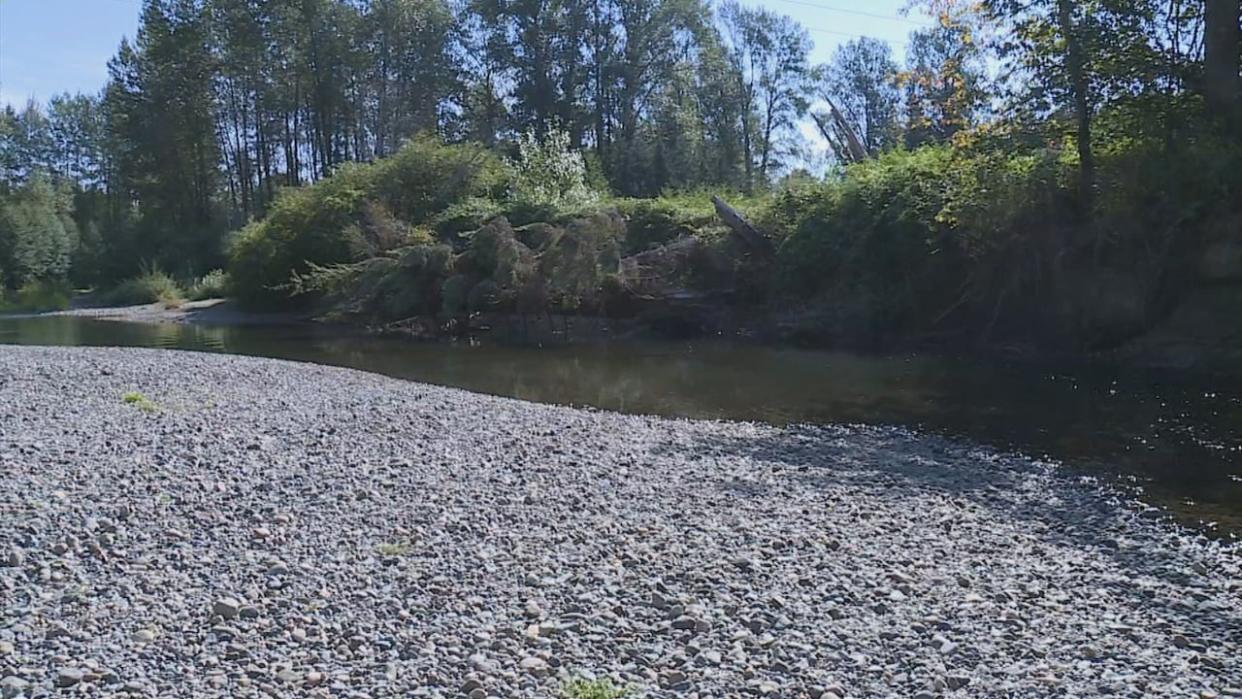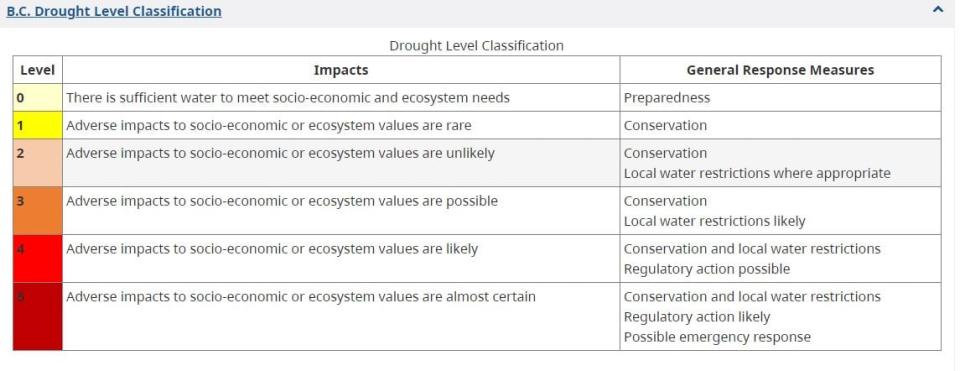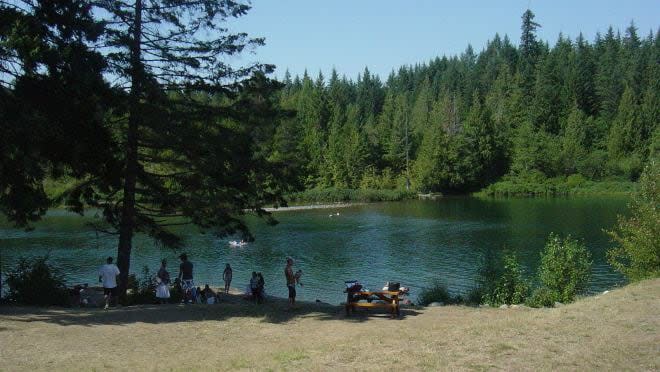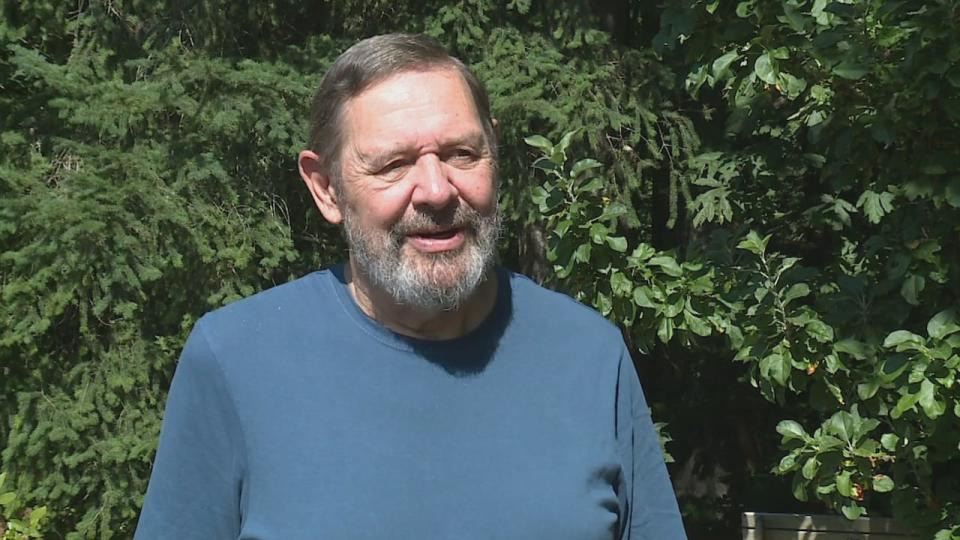As drought continues, new restrictions and an experiment in one Vancouver Island region

Nearly two months after drought Level 5 was declared on Vancouver Island, steps are underway in the Comox Valley to conserve water and aid returning salmon.
Drought Level 5, declared when "adverse impacts to socio-economic or ecosystem values are almost certain," is the highest level on British Columbia's drought scale.
More than half of B.C.'s water basins (18 of 34) are currently at drought Level 5.

Nearly all of B.C.'s watersheds are at drought level 4 or 5. Emergency Management and Climate Readiness Minister Bowinn Ma called it 'a sleeping giant of a natural disaster.' (Province of BC )
The core communities of the Comox Valley — the town of Comox and the city of Courtenay — will move to Stage 3 water restrictions on Monday, Sept. 11, along with rural communities in the Comox Valley Water System.
That means no lawn watering, no washing of cars or boats at private residences, no power washing, and no filling pools, hot tubs, or ponds.
People can still water gardens, trees, and shrubs if they do so by hand or with micro or drip irrigation.
It's not uncommon for the region to reach Stage 3 in September — but Kris La Rose, senior manager of Water/Wastewater Services for the Comox Valley Regional District — says it's crucial to make sure the problem doesn't get worse.
B.C. Hydro manages the Comox Lake Reservoir, which is also the water source for much of the valley. When water levels are low in the adjoining Puntledge River, B.C. Hydro decreases the flow to make sure the river doesn't run dry and strand fish.
When the river flow is decreased, the regional district is required to tighten restrictions.

Puntledge River, at the outlet of the Comox Lake Reservoir, is maintained by B.C. Hydro. Hydro is lowering water levels to maintain river flow, which means the Comox Valley needs to tighten water restrictions. (B.C. Hydro)
"We're happy that B.C. Hydro is taking the steps to reduce flows down river now to mitigate the potential for worse impacts to fish later on in the summer," said La Rose.
He said if water isn't managed now, the community risks facing Stage 4 restrictions — something he said could damage the economy.
Stage 4 would mean no outdoor water use at all and possible limits on indoor use, too.
La Rose can't say what will happen next, but he hopes the tightening of restrictions now will be enough to conserve water until the rains come.
An experiment for the salmon
On the nearby Tsolum River, people have been worried about fish for months.
Two years ago, more than a thousand adult pink salmon died as they returned to the river to spawn.
They got trapped in a bottleneck where water levels were low, and fish towards the back of the school died as oxygen levels in the water depleted.
This year, the river has been below critical water levels since July 20.

Wayne White of the Tsolum River Restoration Society has been closely monitoring the river. The water has been below critical levels since July. (CHEK News)
Members of the Tsolum River Restoration Society are running an experiment they hope will help salmon make it safely through the river, even in hot, dry summers when oxygen levels tend to drop.
Now, with a grant from the Pacific Salmon Foundation, the society is bringing in aerators to increase the oxygen content as fish rush back up the river to spawn this fall.
"So our hope with aerators is to actually supply enough air mid-school [of fish] to actually supply air for the rest of the school," said society president Wayne White.
They're also looking for potential bottleneck locations and clearing the way so that fish will be able to travel more freely.
Jason Hwang, the vice president of salmon for the Pacific Salmon Foundation, called the aerator pilot "an outside-of-the-box idea."
"It's not something that we want to have to do," said Hwang, "but if that's the condition that we think salmon are going to face, it's a really neat idea."
It won't be clear if the idea works until pink salmon head up the river to spawn, which White said is likely to happen when rain comes.


